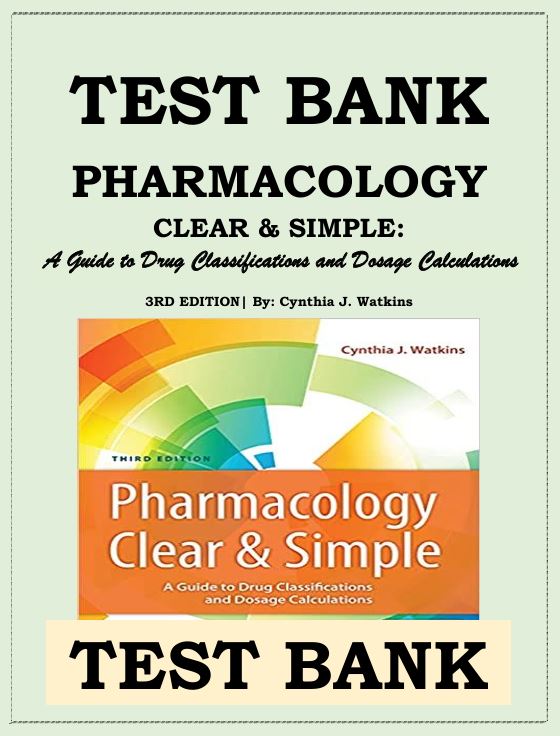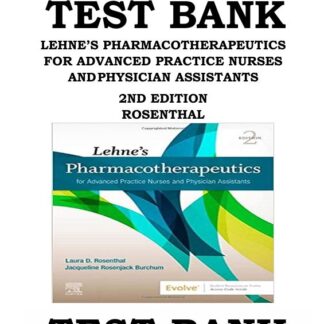Description
Chapter 1. History of Pharmacology
Pharmacology Clear and Simple- A Guide to Drug Classifications and Dosage Calculations 3rd
Edition Watkins Test Bank
1.
A nurse working in radiology administers iodine to a patient who is having a computed
tomography (CT) scan. The nurse working on the oncology unit administers
chemotherapy to patients who have cancer. At the Public Health Department, a nurse
administers a measles-mumps-rubella (MMR) vaccine to a 14-month-old child as a
routine immunization. Which branch of pharmacology best describes the actions of all
three nurses?
A)
B)
Pharmacoeconomics
Pharmacotherapeutics
C)
D)
B
Pharmacodynamics
Pharmacokinetics
Ans:
Feedback:
Pharmacology is the study of the biologic effects of chemicals. Nurses are involved
with clinical pharmacology or pharmacotherapeutics, which is a branch of
pharmacology that deals with the uses of drugs to treat, prevent, and diagnose disease.
The radiology nurse is administering a drug to help diagnose a disease. The oncology
nurse is administering a drug to help treat a disease. Pharmacoeconomics includes any
costs involved in drug therapy. Pharmacodynamics involves how a drug affects the
body and pharmacokinetics is how the body acts on the body.
2.
A physician has ordered intramuscular (IM) injections of morphine, a
narcotic, every 4 hours as needed for pain in a motor vehicle accident
victim. The nurse is aware this drug has a high abuse potential. Under what
category would morphine be classified?
A)
B)
Schedule I
Schedule II
C)
D)
Schedule III
Schedule IV
Ans:
B





Reviews
There are no reviews yet.